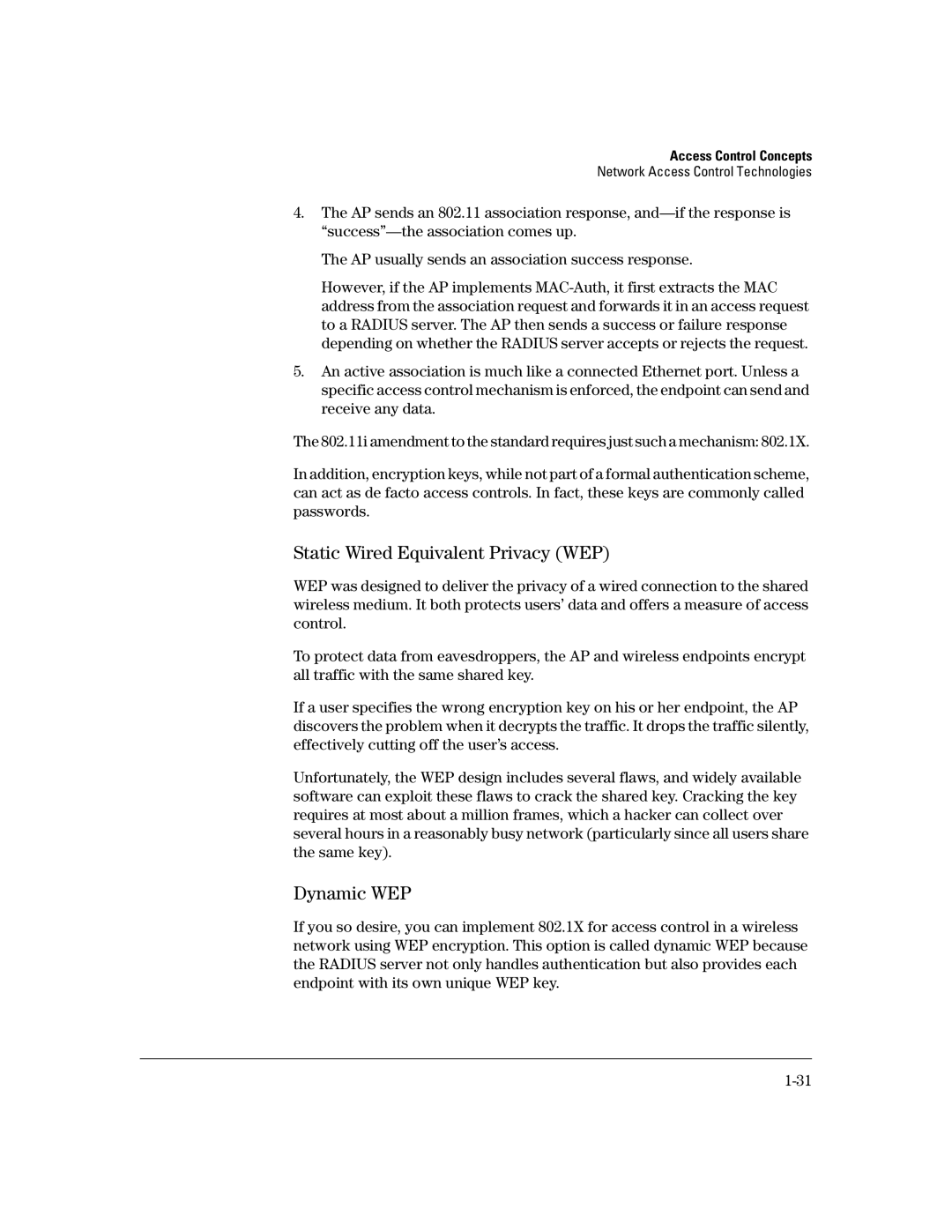Access Control Concepts
Network Access Control Technologies
4.The AP sends an 802.11 association response,
The AP usually sends an association success response.
However, if the AP implements
5.An active association is much like a connected Ethernet port. Unless a specific access control mechanism is enforced, the endpoint can send and receive any data.
The 802.11i amendment to the standard requires just such a mechanism: 802.1X.
In addition, encryption keys, while not part of a formal authentication scheme, can act as de facto access controls. In fact, these keys are commonly called passwords.
Static Wired Equivalent Privacy (WEP)
WEP was designed to deliver the privacy of a wired connection to the shared wireless medium. It both protects users’ data and offers a measure of access control.
To protect data from eavesdroppers, the AP and wireless endpoints encrypt all traffic with the same shared key.
If a user specifies the wrong encryption key on his or her endpoint, the AP discovers the problem when it decrypts the traffic. It drops the traffic silently, effectively cutting off the user’s access.
Unfortunately, the WEP design includes several flaws, and widely available software can exploit these flaws to crack the shared key. Cracking the key requires at most about a million frames, which a hacker can collect over several hours in a reasonably busy network (particularly since all users share the same key).
Dynamic WEP
If you so desire, you can implement 802.1X for access control in a wireless network using WEP encryption. This option is called dynamic WEP because the RADIUS server not only handles authentication but also provides each endpoint with its own unique WEP key.
